The horror of Auschwitz, the dead of Buchenwald, the survivors of Dachau – they are all well known in the media. The Holocaust in Germany and Poland has been well researched. But apart from these crimes, there is often still a great emptiness and silence. Yet in many other Eastern Bloc countries the Holocaust was at least as brutal and murderous. In the Holocaust in Ukraine alone, more than 1.5 million Jews died. They were shot, beaten to death, starved to death or were transported in cattle cars to the German death camps in Poland and gassed. As an example, we will first talk about the Holocaust in Lviv.
Holocaust in Ukraine – New Dimensions of a Crime
The Holocaust had already been unleashed with the invasion of Poland. Jews were already being persecuted and murdered in the occupied territories of Poland and other countries. But the invasion of the Soviet Union acted as an accelerant. In the course of the conquest of Ukraine, Einsatzgruppen of the Wehrmacht and SS moved through the occupied territories and rounded up Jews. First they were disenfranchised, herded into ghettos, and then systematically murdered. Everywhere between the San and Don rivers, Jews became victims of German war criminals and their helpers.
Holocaust with bullets – Less tangible than gas chambers
Unlike Auschwitz, Buchenwald or Dachau, however, these murder sites are hardly known to this day. One of the main reasons for this may be that the so-called Holocaust with bullets is much less comprehensible. The Einsatzgruppen usually murdered Jews in forest pits, ravines or other remote locations. The pits were filled in, often the bodies were burned, and the valuables and clothing were collected and disposed of by the occupation authorities. In many of the places almost no traces of the mass murders remained.

Lviv – Jewish quarter as big as Heidelberg
One of the most glaring examples of the Holocaust in Ukraine is the city of Lviv, in Polish called Lwow, in German Lemberg. There were an estimated 160,000 Jews living in Lviv on the day Germany invaded the Soviet Union. 110,000 lived in prewar Polish Lviv. Due to the partition of Poland between Nazi Germany and the Soviet Union in 1939, 50,000 Jews had already fled to Lviv from the areas occupied by the Germans. When the Germans attacked again, escape was hopeless for many.
Pogroms after the German invasion
Pogroms against the Jewish inhabitants of the city began as soon as the Germans invaded. Stores were destroyed, homes were set on fire, synagogues were desecrated and Jews were persecuted, humiliated, beaten and killed in the streets. In these pogroms alone, 4,000 Jewish citizens of the city were murdered. Shortly thereafter, Jews were conscripted into forced labor.
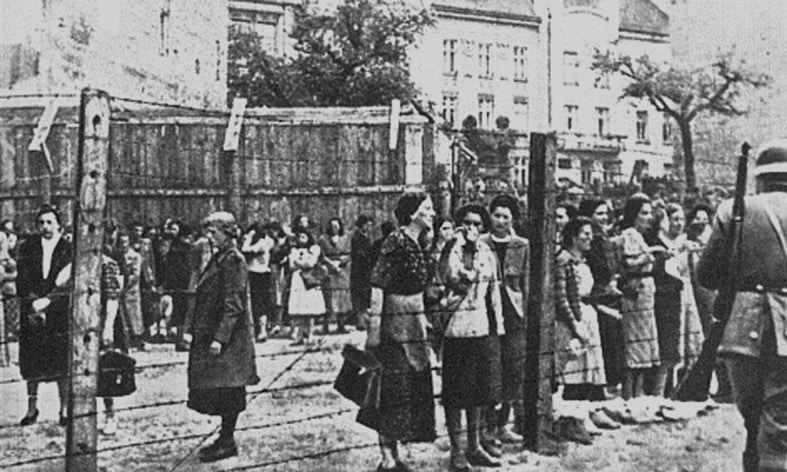
Jews are crammed into the Lviv Ghetto
In November 1941 the ghetto was established. Within a month all Jews had to move there. On the way to this “Jewish residential district”, thousands of old and sick people were already selected and murdered. A curfew was imposed and Jews were allowed to leave the ghetto only with a pass for forced labor. Access for non-Jews was prohibited. The conditions in the ghetto were inhumane. There was constant hunger and epidemics were rampant. 160,000 people were housed in what was considered the poorest part of the city and previously had only a fraction of its population. The SS patrolled and sometimes shot passersby indiscriminately.
Selection and deportation to concentration and extermination camps
After the registration of the Jews in the ghetto, the systematic exploitation and extermination of the Jewish citizens of the city intensifies. Selections take place regularly. Jews who were able to work were sometimes taken to the Janowska concentration camp. During selections, Jews are chosen for transport to extermination camps. On certain days, freight trains carrying tens of thousands of people are sent to Belzec, less than 100 kilometers away. Belzec is also little known because, unlike Auschwitz, there are only THREE known survivors at all. The number of victims is estimated at around 500,000 – among them a large part of the 160,000 Jews of Lviv.

Janowska Concentration Camp – Crimes Covered Up with the Bone Mill
But Jews were also brought to Lemberg from the surrounding towns. In total, several hundred thousand are said to have passed through the Lemberg-Janowska concentration camp. They were exploited by several armament companies on site. Executions took place regularly in the dunes behind the camp. As Soviet troops were on the march and advancing further and further into Ukraine, the Nazis tried to cover up their crimes. Jewish forced laborers had to dig up the remains of victims buried in the dunes. The body parts were crushed in specially designed machines called bone mills.
What sounds almost impossible was described by Holocaust survivor Leon Wells in his autobiography Son of Job. He had managed to escape from the camp and the ghetto.
Few survivors of the invasion of Soviet troops
When Soviet troops re-entered Lviv on July 26, 1944, hardly anyone of the city’s Jewish population was still alive. It is unclear how many Jews from Lviv survived the war. Many were imprisoned in concentration camps further west, while others had already left the city before the Germans invaded. In the city itself, out of more than 160,000 Jews before the war, only a few hundred are believed to have survived. They had gone into hiding or survived with false papers.
One among many – Debora Vogel
There are so many victims of the Holocaust in Lviv that it is almost incomprehensible. But one of the fates that touched me the most in my research for my work as a tour guide for Jewish tours in Lviv is the fate of Debora Vogel. Born in Burshtyn, a town about 90 kilometers from Lviv, her family moved to Lviv after the First World War. Here she went to school, graduated from high school and studied at the university.
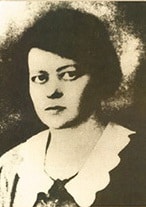
She had a wide knowledge of the literature and culture of her time and was present in circles of Polish avant-garde artists. She was also a good friend of the Drohobych writer Bruno Schulz. Debora Vogel wrote poetry in Yiddish. Actually, Polish was her mother tongue, but she probably chose Yiddish because she was a Zionist. Her poems also influenced the work of Bruno Schulz and inspired him to write his novel Street of Crocodiles.
Vogel was imprisoned together with her family in the Lviv Ghetto and exploited there. During a selection in August 1942, she was shot together with her husband, the architect Szulim Barenblueth, her mother and her five-year-old son Aszer as one of many thousands in the ghetto. After the war, her work was largely forgotten. However, in recent years there has been a publication of some of her works in Polish and in German.
Memory Culture in the Soviet Union – Memory Only for Communists?
With the defeat of Nazi Germany, the map of Europe was also rearranged. Not only Germany lost territories. The territories of Poland that lay east of the San river were also annexed by the Soviet Union and incorporated into the Ukrainian SSR. Polish citizens, including Polish-speaking Jews, were expelled. Even thinking about the victims was not made easier by the location of most of the murder sites on the territory of the Soviet Union after 1945. The commemoration policy of the Soviets did not allow any special commemoration of Jews. Mostly murdered Soviet citizens, prisoners of war or partisans were commemorated. At many places of remembrance of Jewish victims there were no memorials or memorial plaques until the end of the Soviet Union. Only slowly the commemoration becomes more awake again and more and more people are interested in the topic.
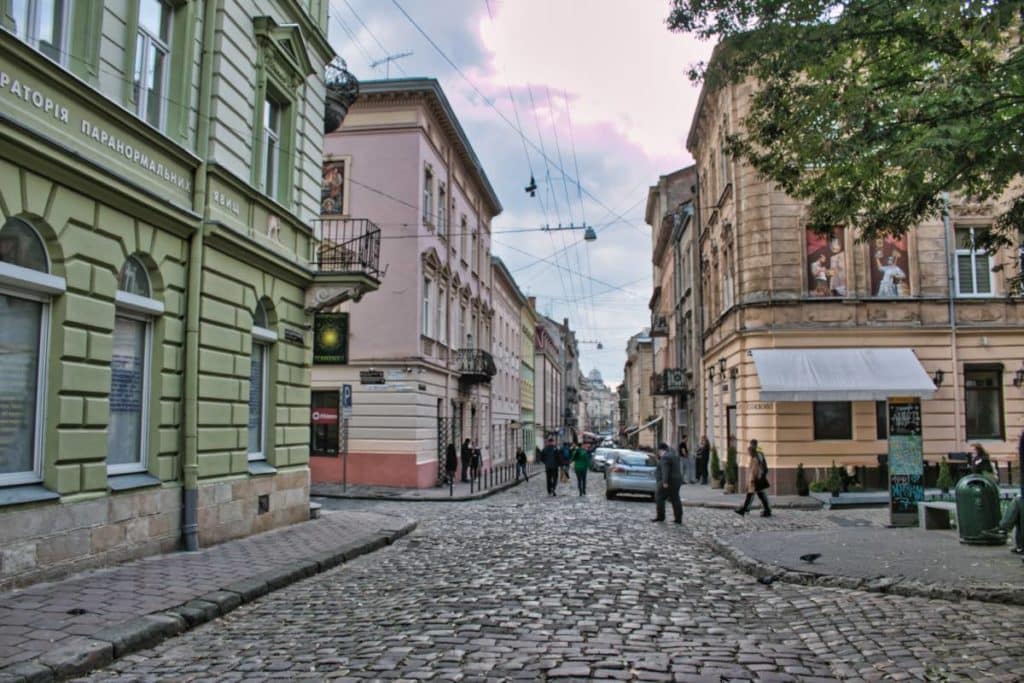
Stumbling stones to pave a whole street
But there is another problem. How can this mass murder be commemorated appropriately at all? I find the action of the Stolpersteine a beautiful form of commemoration. It’s a German project. An artist puts stones in front of places where Jewish people used to live. It’s a great project to remember the individual victims of the Holocaust with names. But let’s take the example of Lviv. Considering the size of the Stolpersteine of around 10 by 10cm (3,5 by 3,5 inch) and the number of Jewish victims of the Holocaust in Lviv, a street of almost one kilometer (more than half a mile) could be paved with them. That would be longer than the former Jewish Street in Lviv Old Town.
Holocaust memorials and places in Lviv
At least, there are memorials that draw attention to the Holocaust in Lviv and commemorate the fate of the city’s Jews.
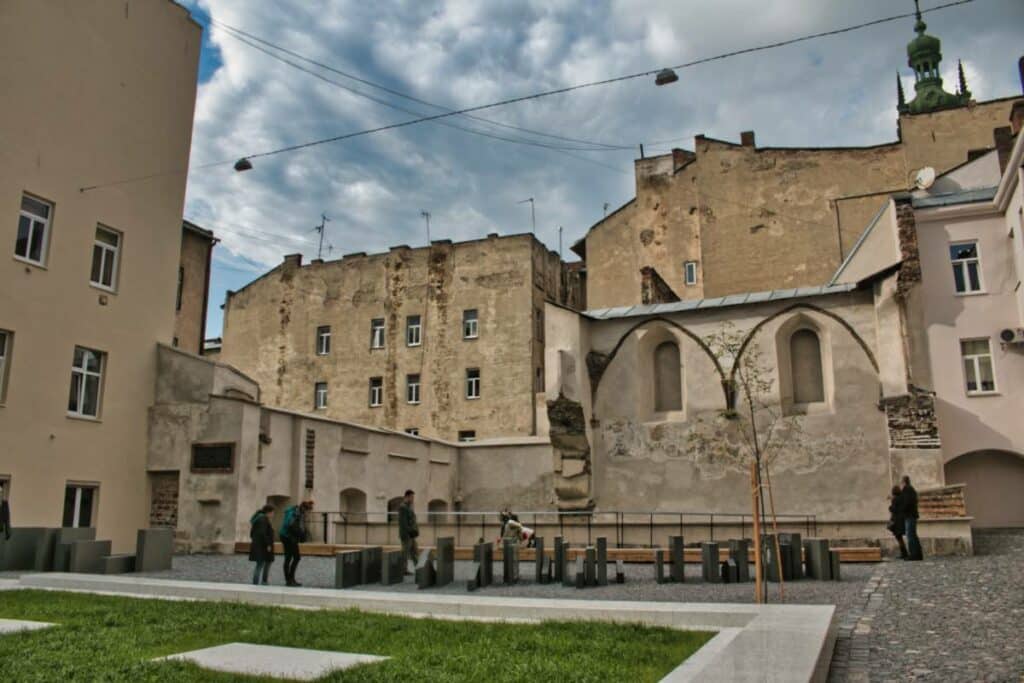
Ruin of the Golden Rose Synagogue
The most famous and visible memorial to the Holocaust in Lviv is the ruins of the Golden Rose Synagogue. The Golden Rose was the most famous synagogue in the city. Eminent rabbis taught here and helped the city gain a reputation in the Ashkenazi world. The synagogue in the old Jewish quarter of the city was surrounded by other Jewish buildings – the large central synagogue and a synagogue for Talmud studies. Today, only a few walls are recognizable. Since 2016, a memorial commemorates the synagogue destroyed by the Nazis. Here are also quotes from Jewish victims and survivors of the Holocaust immortalized on stones. They also commemorate the destroyed Jewish cemeteries in the city.
Jakub Glanzer Shul
The Glanzer Shul (Vuhilna Street) is one of two synagogues that survived the war and are still used as Jewish institutions. In the local cultural center there is an exhibition about the destroyed synagogues of Lviv, events are held and information about the history of the building is provided. The volunteers around Sascha Nazar also take care of the preservation of the Jewish heritage in the surrounding area.
Ghetto Memorial
The Ghetto Memorial (see cover image) commemorates the Jews who suffered and were murdered in the Lviv Ghetto. The memorial was erected in 1992 and designed by Lviv Holocaust survivor Luisa Scherenstein. Wreath-laying ceremonies are also held here every year to commemorate the fate of the ghetto Jews.
Memorial at the Janowska Concentration Camp in Lviv
There is also a memorial to the victims of the concentration camp on the site of the former Janowska concentration camp. Unfortunately, to this day, even 77 years after liberation, there are no signs or design of the site as a Holocaust memorial. Part of the problem is that partial areas of the former camp have been built on and continue to be used by a prison to this day. However, at least in the sand pits that are accessible, there should be signs.
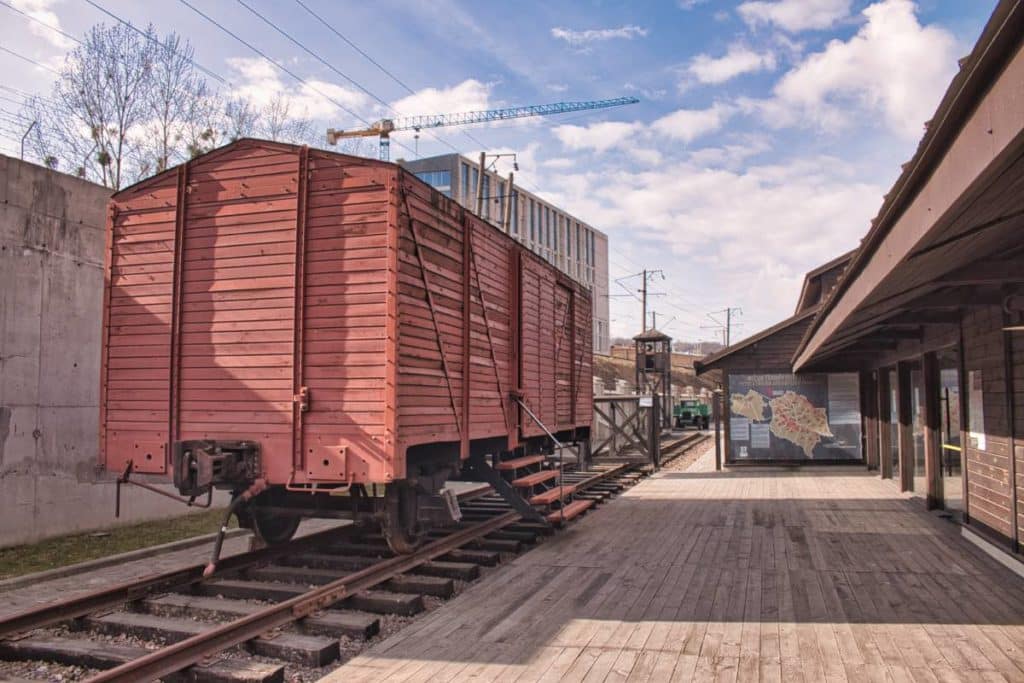
Territory of Terror Museum
The Territory of Terror Museum stands on the site of an NKVD transit camp from which prisoners were transported to Soviet gulags. The museum deals with the victims of totalitarian tyranny of both Nazism and Communism. The team of young researchers puts together exhibitions about the Holocaust in Lviv and also provides information, for example, about the Janowska concentration camp.
Books on the Holocaust in Lviv and Ukraine
The subject of the Holocaust in Lviv, Ukraine, has come further into focus in recent years and there are very interesting books on the subject by authors worthy of support.
East West Street
In his book East West Street, British author Philippe Sands describes how the two Lviv residents Raphael Lemkin and Hersch Lauterpacht coined the terms “crimes against humanity” and “genocide”. He simultaneously paints a moving portrait of Lviv at the time of the Second World War and of the two protagonists, who went through a highly divergent development.
- Sands, Philippe (Author)
My Lvov
Holocaust survivor Janina Hecheles describes how she and her family hide in the sewers of Lviv and therefore survive the Holocaust this way.
- Hescheles, Janina (Author)
Tango of Death
The writer outlines the story of another Holocaust survivor from Lviv who survive the Shoah as a violin player.
- Mintz, Dmitry (Author)
More on the topic online
There are great initiatives to research the topic. Particularly noteworthy are:
- Vanished World Blog – On his blog, Christian Herrmann publishes photos of his travels through the countries affected by the Holocaust and highlights the disappearing traces of the region’s Jewish past.
- Lviv Center for Urban Studies – The Lviv Center takes care of the research of the urban space and has also contributed a lot to the preservation and research of Jewish Lviv. A visit to the site shows the various commemorative projects.

Donate for the preservation of Jewish culture
There are some initiatives that collect donations for the preservation of Jewish sites. However, I particularly admire the work of Sascha Nazar, who, among other things, takes care of the preservation of the Jakub Glanzer Shul. Those willing to donate are welcome to contact him at nazzzalex1[at]gmail.com.


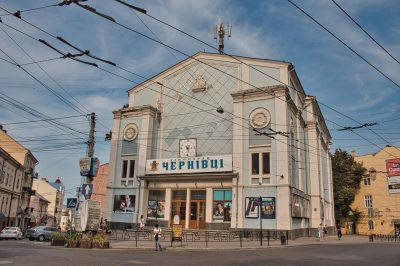
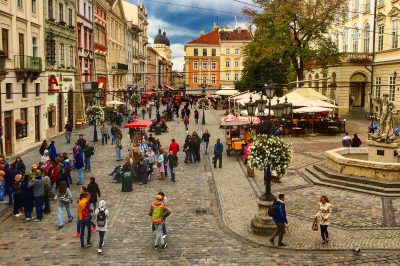
A fascinating read. My wife’s family come from Brody and we were due to go to Brody and Lviv, last year before the Covid pandemic. Hopefully we will visit this year or more likely 2022.
Hi Ian, thanks for the compliments. Well, both places will still be there next year. So just catch up with your trip once it’s safe. Good luck and enjoy!